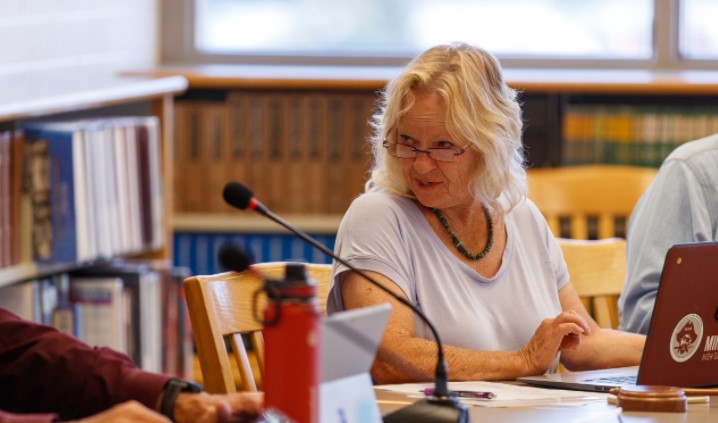The Mingus Union High School Governing Board reviewed the results from a stakeholder survey designed to guide how it spends government relief funds at its Sept. 9 meeting.
The district was awarded nearly $1.7 million in Elementary and Secondary School Emergency Relief funds, which it must spend before September 2024.
Business Manager Lynn Leonard said while 20% of the funding, or around $334,000, must be spent on addressing learning loss from the COVID-19 pandemic, the remaining 80%, or around $1.3 million, is more flexible.
However, when determining what it will spend its money on, the district was required to “engage in meaningful consultation” with stakeholders.
“In order for us to meet the requirements of this grant, we must engage in meaningful consultation … and we take that information we get from people and we use the input we receive to help develop the framework for the funds,” Leonard said.
In order to comply with those requirements, the district launched a community survey on Aug. 27 in which it consulted its administration, teachers, department heads and the union as well as held a public meeting Sept. 9. Additionally, it used robocalls, mass emails and Facebook posts among other methods to survey students, parents, staff and other members of the community, Superintendent Mike Westcott said.
“We did all we could to solicit input,” he said.
The idea behind gathering stakeholder input is so that when the district goes to spend funds, it knows it has the community’s support.
“The key there … is that when we start spending these funds and material items, for example, or staff members start appearing and we’re asked ‘Why was that added’ or ‘Why did you do that,’ we have community support behind why we made the choices we made,” he said.
Westcott shared the results of the survey with the governing board at the Sept. 9 meeting. The results were calculated using a weighted average out of four. The majority of the respondents were parents, making up just over 67% of the total response.
The first question asked respondents to rate the importance of summer school, intersession school, after-school programs or online curriculum. While the majority of those surveyed felt all four were at least somewhat important, after-school programs came out slightly ahead with a weighted average of 3.25, while intersession school was rated the least important.
The second question aimed to determine the stakeholders’ feelings on whether classroom aides, subject matter interventionists for math, English and science, support for special student populations or support staff such as custodians, IT professionals and maintenance staff, should be prioritized. There was strong support for every category of staff, though subject matter interventionists ranked the highest.
“This is where you would hire a subject matter-specific person to work with teachers and students to improve and gain ground in terms of any learning loss that might have taken place over the last year,” Westcott said. “There’s pretty strong support for aids, interventionists, special student population support and support staff as well.”
The next question asked respondents which was most important between providing Chromebooks to kids, greater access to curricular websites, hotspots for families and improved school websites and communication tools. Chromebooks were rated as the most important, though all four received high rankings of importance with weighted averages over three.
The fourth question was regarding Social Emotional Learning [SEL], which is a focus on teaching social skills to students such as self-awareness, self-management, responsible decision-making and relationship skills. The question asked respondents to determine the importance of parent resources, training for teachers, school counselors, school social workers and SEL curriculum. All five received a weighted average of more than three, though school counselors and training for teachers received the most support.
The final question asked about the importance of school facilities including improving room ventilation and air quality, classroom furnishings, personal protective equipment, outdoor teaching spaces and infrastructure improvements, and increased school security. Improving room ventilation and air quality was by far considered the most important while increased security was also rated as important. Providing additional PPE was ranked the lowest with a weighted average of only 2.60.
Leonard said the board’s next steps are to continue to review the input it received, finalize the expenditure plan and submit the grant application. Even once it has submitted the application, however, it still intends to revise it as new needs arise over the next three years.
“The framework we submit this time will be just that: It will be a framework. … It’s really hard to predict what we’re going to need to do over the next three years,” she said. “I think it would be really short-sighted of us to come up with a plan right now and say, ‘This is it for the next three years.’ We want to be flexible and make sure that we use these funds to put them to the best use.”
